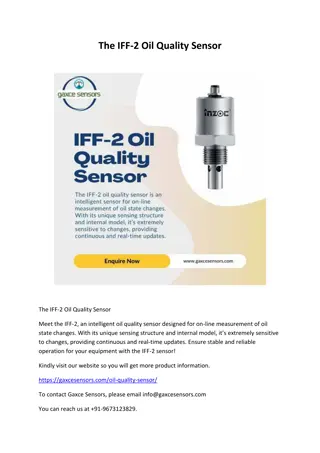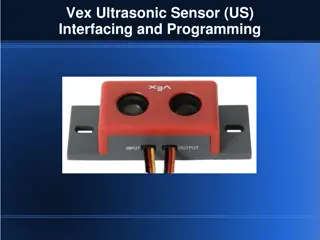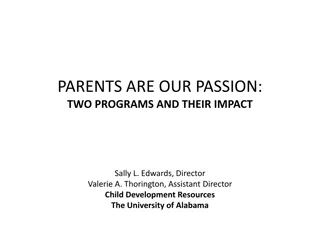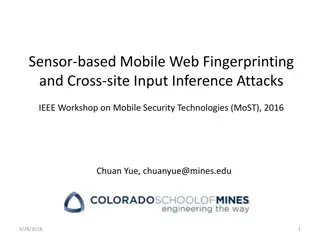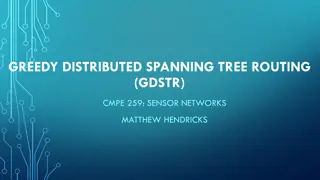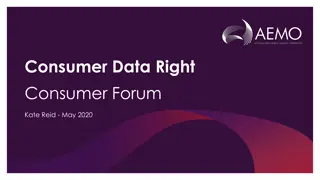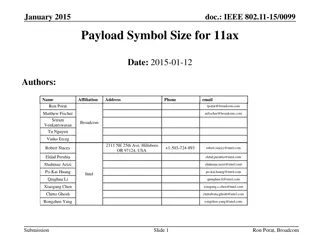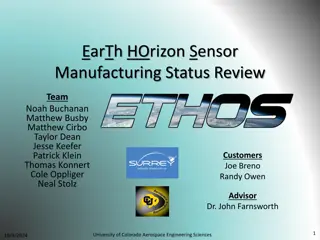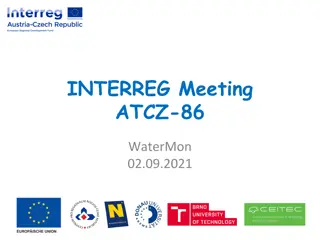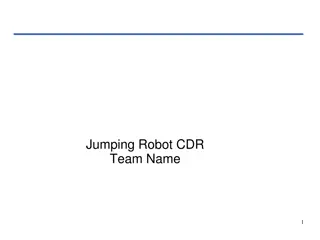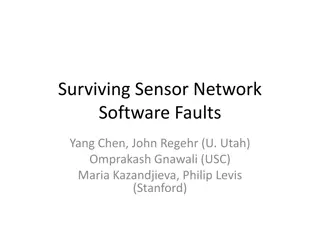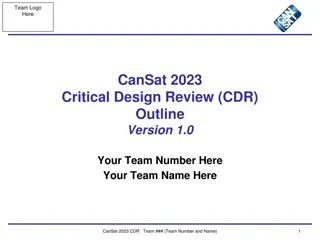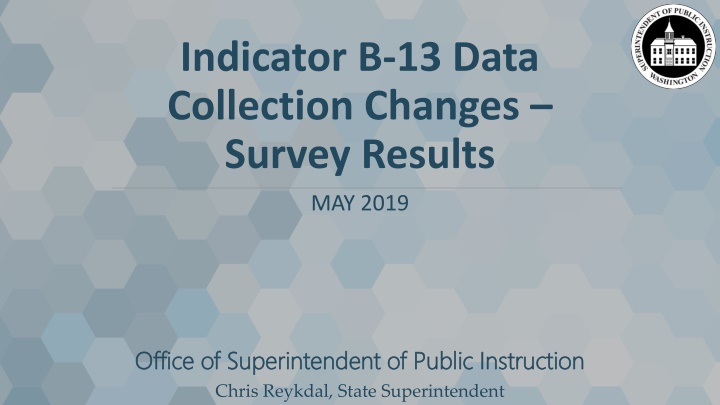
Deployable Sensor Payload CDR Team
Provide a comprehensive guide on creating a successful Critical Design Review (CDR) presentation for your Deployable Sensor Payload team. Include essential slides, instructions, presentation outline, team organization, acronyms, system overview, mission summary, system requirement summary, design changes since PDR, system level design, and system concept of operations.
Uploaded on | 0 Views
Download Presentation

Please find below an Image/Link to download the presentation.
The content on the website is provided AS IS for your information and personal use only. It may not be sold, licensed, or shared on other websites without obtaining consent from the author. If you encounter any issues during the download, it is possible that the publisher has removed the file from their server.
You are allowed to download the files provided on this website for personal or commercial use, subject to the condition that they are used lawfully. All files are the property of their respective owners.
The content on the website is provided AS IS for your information and personal use only. It may not be sold, licensed, or shared on other websites without obtaining consent from the author.
E N D
Presentation Transcript
Indicator B-13 Data Collection Changes Survey Results MAY 2019 Office of Superintendent of Public Instruction Office of Superintendent of Public Instruction Chris Reykdal, State Superintendent
1. What is your role? (check all that apply) 100% 76.0% 80% 60% Percent 40% 20% 13.3% 8.0% 1.3% 1.3% 2.7% 2.7% 1.3% 1.3% 0% Sp. Ed. Admin Other Admin Sp. Ed. Teacher Other Teacher ESA Parent ESD OSPI Other | Special Education 5/8/2019 |
2. What school district or Educational Service District (ESD) are you representing? 30% 21.3% 20% 17.3% 16.0% 12.0% 10.7% 9.3% 10% 4.0% 4.0% 2.7% 2.7% 0% ESD 101 ESD 105 ESD 112 ESD 113 ESD 114 ESD 121 ESD 123 ESD 171 ESD 189 Other | Special Education 5/8/2019 |
3. Which of the following methods for collecting secondary transition IEP data do you recommend? Methodology 1 (% of district's age 16-21 sp. ed. enrollment, with cap) 24.6% Methodology 2 (% of district's age 16-21 sp. ed. enrollment, with no cap) 4.6% 70.8% Methodology 3 (based on district size grouping) | Special Education 5/8/2019 |
4. What time of year should the data be due? 50% 40% 35.4% 27.7% 30% 21.5% 20.0% 20% 10% 3.1% 3.1% 0% Beginning of year (i.e., September) Middle of year (i.e., January) End of year (i.e., June) Same as the post- school surveys (November 1) Same Ind B-11 and B-12 (July 15) Other | Special Education 5/8/2019 |
5. How long would you recommend the data collection window remain open? One month 6.2% 16.9% Two months 13.8% Three months 9.2% Four months Five months 33.8% 20.0% Other | Special Education 5/8/2019 |
6. Who should select the files to be reviewed? Office of Superintendent of Public Instruction (OSPI) &/or Center for Change in Transition Services 9.5% 31.7% School District 58.7% Other | Special Education 5/8/2019 |
7. Rank the top priority areas for selecting IEPs to be reviewed in order to have a representative sampling of secondary transition files. Overall Rank Number of Rankings Item Rank Distribution Score Disability Category 1 286 63 LRE Codes 2 265 62 Grade/Age Level Race/ Ethnicity School Building 3 202 60 4 199 62 5 177 62 Gender 6 156 59 | Special Education 5/8/2019 |
8. Additional questions from responders (see related Q&A): 1. What is the goal of the change in data collection for Indicator B-13? 2. What will the data be used for? 3. What will be the training and guidance for each district? Can the training be online so that secondary staff can easily access? 4. Will there be any allowances for a district that submits to Safety Net and/or has a WISM review (i.e., will they still have to complete the B-13 data collection)? | Special Education 5/8/2019 |
8. Additional questions from responders (continued): 5. When files are selected to be reviewed, are they current IEPs (i.e., students still in school) or are they students who have graduated or dropped out? 6. In order to obtain accurate results, would it be possible for a neutral party to review the files? 7. Would completing the data collection require additional steps, such as student and teacher interviews and program reviews? 8. How will a system be developed to assure that all districts understand the questions and calibrate their answers in a similar way? | Special Education 5/8/2019 |
8. Additional comments from responders (to be considered as part of the next steps): 1. Timing/Due Date: a. Self review in October, district implements action plan to address any issues, submit final results in June. Focus becomes more about learning as a result of the self-review, less on compliance. b. November 1 is difficult time due to child count and post-school surveys, and districts would have to wait an entire year for determination letters to come out. c. Alignment with the post-school surveys (i.e., November 1) makes sense puts it between opening of the year and spring which is filled with budgeting and hiring. | Special Education 5/8/2019 |
8. Additional comments from responders (continued): 2. Time Commitments: a. Additional work and requirements for districts that take away from the OSPI priorities. b. Since we have the leaver data, which seems to be the most appropriate way to assess student transition outcomes, this feels like an excessive layer of compliance. c. This seems like an additional compliance activity for districts that already submit to Safety Net and participate in WISM reviews. | Special Education 5/8/2019 |
8. Additional comments (continued): 3. Data Collection: a. The opportunity to review and improve before submission is a fair way to increase compliance and to provide training on B-13. b. Ensure there is teacher participation in the data collection. c. We need data by school, not just by district, and LRE and disability category would be helpful. d. Can districts have access to live data as the reviews are completed? e. How will the system assure that all districts understand the questions and calibrate their answers in a similar way? f. Can the WISM process be used to corroborate district results? | Special Education 5/8/2019 |
8. Additional comments (contd): 4. Data Collection: a. Training should be provided by ESDs or CCTS in an online fashion so that secondary staff can access the training. b. Provide training for secondary special education providers to write transition IEPs as well as district-level staff who provide direct support to site-based staff. c. Would it be possible for neutral parties to be trained to review the files? d. Training should be a priority during the spring and summer to get all needed items in place. | Special Education 5/8/2019 |
If you have any questions, contact: Jennifer Story Program Improvement Coordinator OSPI Special Education 360-725-6075 Jennifer.story@k12.wa.us Creative Commons License Except where otherwise noted, this work by Office of Superintendent of Public Instruction is licensed under a Creative Commons Attribution 4.0 International License. | Special Education 5/8/2019 |


